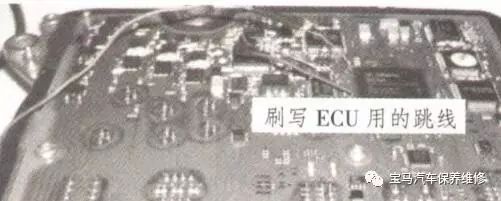Vehicle Condition: A BMW 328i with a mileage of over 220,000 km. The engine experiences idle shaking, fluctuating RPM, and sometimes fails to accelerate, emitting black smoke at times.

Fault Diagnosis: Using a BMW-specific diagnostic tool, three fault codes were retrieved:
16685 (Cylinder 1 Misfire)
16686 (Cylinder 2 Misfire)
16688 (Cylinder 4 Misfire)
It was determined that there was a fault in the ignition system, so the ignition coils and spark plugs were replaced. After replacement, the idle was stable, but during rapid acceleration, the engine lacked power and seemed to be limited.
Next, the fuel pressure was checked with a fuel pressure gauge, and the pressure was normal. The fuel injectors were also removed and tested at the injector testing station. The test showed good atomization during startup; the fuel was then switched to 97 octane. A compression test showed the cylinder pressure was within normal range. The throttle body, boost pressure sensor, and turbocharger were swapped out, and the mass airflow sensor was cleaned with compressed air and a cleaning agent, but the fault persisted.
Based on the above situation, we suspected insufficient fuel delivery from the injectors, leading to inadequate power. The vacuum line from the fuel pressure regulator was disconnected, and carburetor cleaner was sprayed into the intake manifold to enrich the mixture. However, this did not work, and there were signs of backfire from the vacuum line. We then suspected a blockage in the catalytic converter, so we removed the upstream oxygen sensor to check if the exhaust was flowing freely. The same fault remained.
After swapping the ignition coils again, the engine idled smoothly, but during rapid acceleration, it produced a “thumping” sound. The engine RPM was between 2000-3000 r/min, and it could not go higher.
If the throttle was applied slowly, acceleration was sometimes marginally normal, but rapid acceleration still failed. Considering the checks already performed, we used the diagnostic tool to read the fault codes, which were still the original misfire codes. When reading the data stream, the voltages of the front and rear oxygen sensors were fluctuating within the normal range. The mass airflow sensor signal was 2.6 g/s at idle, but its response during rapid acceleration was poor.
After reviewing the data, we found that the mass airflow sensor’s values during rapid acceleration had a significant deviation from those of a normal vehicle’s sensor. We then disconnected the mass airflow sensor’s connector (at this point, the control unit could not receive the mass airflow sensor’s signal, and it calculated the throttle position signal and accelerator pedal position signal to substitute for the mass airflow sensor signal for fuel control) and conducted an acceleration test, but there was no change in engine performance.
Suspecting a fault in the mass airflow meter, we replaced it with one from a similar model vehicle. After installation, the acceleration test still showed no change. At this point, we suspected a fault in the engine ECU. We first measured the wiring from the mass airflow meter connector to the main ECU connector, and all connections were intact, indicating no wiring faults.
The engine ECU was removed from the vehicle, and a signal generator was connected to the signal input terminal, while an oscilloscope was connected to the output execution terminal. By simulating various operational signals of the mass airflow meter, we observed the oscilloscope waveforms, which showed no significant changes, or only minor fluctuations, indicating a fault in the engine ECU. Upon disassembling the ECU, we immediately identified the fault point; the vehicle had undergone ECU reprogramming at a modification shop three years ago, and upon opening it, we could see two additional wires on the back of the ECU, which were used for reprogramming.

Since the ECU program had been illegally modified, it was recommended to replace it with an original factory ECU, as the internal data of the ECU had been corrupted, and recovering the original factory data would be very difficult. The damage to the software and internal firmware is different from hardware damage; to completely resolve the fault, the entire ECU must be replaced. After replacement, appropriate decoding was performed. The engine idled well, and acceleration performance improved, with no black smoke emitted.
Fault Summary: Through this case, we learned that one should not casually reprogram the ECU, as it can lead to unnecessary faults, and once a fault occurs, the repair costs can be higher. This also illustrates that improper ECU reprogramming can have a series of negative impacts on the internal data, leading to severe consequences and adversely affecting the engine.
If you found this useful, please give a thumbs up! 
 BMW Car Maintenance and Repair
BMW Car Maintenance and Repair
BMW Usage Tips | BMW Maintenance and Repair | BMW News and Information | Other Automotive Related